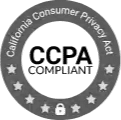Top 9 Sales Training Tips To Transform and Accelerate Deals

Table of Contents
Sales training is a real challenge for most enterprises, especially as you grow and your sales team expands. Product marketers produce wonderful content describing the product and detailing its features and benefits, but that is often not relevant or useful for sellers on the ground.
That’s why sales leaders, sales enablement personnel, and sales managers need to take a different approach to preparing sellers to meet their quotas and close deals.
Here are nine actionable sales training tips and valuable advice from two experts in sales training, Bryan Neale, founder of Blind Zebra, and Ariel Hitron, CEO of Second Nature. They shared their experience and observations in the recent webinar how to supercharge your sales coacing.
1. Build a structured sales training program
It’s crucial to realize that what you’re trying to do with sales training is lead behavior change, Ariel pointed out, and that requires more than intermittent sales training sessions. You need a structured sales coaching program.
There’s a lot to say about building this kind of program, but in a nutshell, structured sales training requires you to:
- Define your goal
- Choose your training scenarios
- Deliver at scale
- Measure and repeat
Typically, sales leaders want to hit all their sales targets simultaneously, which is great for motivation but challenging for building sales training programs. You can’t coach for every goal.
Then you need to work out which training scenarios to use. For example, if your aim is to close larger deals, you might want to coach sales employees to present more big-ticket products, or to handle more C-suite conversations. Think about what your sales rep will need to discover and share in an effective conversation, and use that to build the scenario your seller will need to be coached on.
We’ll cover delivering at scale, and measure and repeat, in points 3 and 9 below.
2. Focus on the conversation
One of the main causes for the gulf between product marketing content and sales teams is that product marketers tend to think about benefits and features, but sales reps hold conversations in which benefits and features flow together.
As Bryan said, “the way that [product] knowledge came to me was way, way apart from what reality was. Then the tools and the process we used just did not work because it was so distant from reality.”
Sales training has to focus on improving sales reps’ ability to hold an overarching conversation which blends skills and knowledge, features and overcoming objections. In order to make a real difference to sales numbers, you need to improve the conversation.
3. Create a culture for sales training and practice
Bryan and Ariel agree on the importance of practice. Bryan drew on his experience as an NFL referee, saying “The best players take the most practice reps. They push the rookies aside and the veterans take the reps because the veterans know how important it is to practice.”
Sales teams need to create a practice culture, where people embrace practice. Bryan pointed out that every professional athlete, musician, or artist spends far more time practicing than they do on the real performance or game, but “in selling, we don’t practice the conversation. We don’t practice the art. And it’s less than optimal, to say the least.”
Some of their suggestions for creating a practice culture included:
- People have mixed responses to the term “role play”; they suggest replacing it with “practice sessions,” “rehearsals,” “scrimmage,” or “film review.”
- Build a competition, with team leaderboards to help avoid creating a toxic competitive culture.
- Emulate movie directors and practice from the middle of the “scene,” instead of constantly starting from “Hello.”
4. Offer a safe sales training experience
Practice is the sales rep’s opportunity to get stuck, analyze where they’re struggling, and learn how to deal with it so that they won’t face that kind of embarrassment in real life. But people cringe to see someone else mess up, so it’s vital to offer safe ways for practice to take place.
Some tactics that Bryan and Ariel use to make practice enjoyable and safe include:
- Take your turn first, so everyone else can watch you screw up
- Divide the entire team into “triads,” groups of 3 who rotate the roles of being the buyer, the seller, and the observer. It’s scalable and reduces the anxiety over messing up.
- Practice with Jenny, Second Nature’s AI-based sales coach, for private sessions and feedback that no one else sees.
- Use Zoom or your phone’s voice notes function to record yourself in a sales conversation, then listening to it to critique your own performance.
- Reward people for getting stuck, to thank them for being real. This could be cash payouts, or cheering each person who messes up because they are working to improve.
5. Adopt data-driven sales training
Ariel highlighted the importance of “data driven training” for connecting your training to the needs of each sales person based on facts. It means going into your Salesforce, Hubspot, or other CRM, looking for gaps in the sales pipeline, and identifying where individuals and teams need support.
If you know what each sales rep is struggling with, you’ll know how to tailor your sales training accordingly. Maybe one sales employee is closing small deals because they are only selling a single product and need to be coached in selling more product lines, or another is finding it tough to transition from discovery to demo and needs more guidance about these specific conversations.
6. Create context for the sales conversation
Sales training role plays only work when there’s a context to the conversation. That means the sales employee and the model “buyer” need to know who the buyer persona is, what came before this conversation, what is the goal, etc.
It’s a process that takes time, but as Ariel said, “the preparation that you put into training is as, or more valuable than, the time that you spend playing the game.” Once you have your conversation guide, you can use it for many practice conversations.
Bryan suggested that instead of making up “realistic” sales conversation scenarios, you catalog those that arise naturally. Search your sales call recordings to note down real life sales conversation scenarios that your sales employees need to practice. These can also be generated via AI for example using Second Nature’s AI sales trainer, Jenny, who learns through her conversations with reps and can come up with original questions and answers within the guidelines of the persona and desired outcome.
7. Put on your sales training hat
Bryan shared a concept of the Six Hats of Sales Management. For sales straining, you need your training hat, not your sales manager hat or your cheerleader hat, which means focusing on that task alone. “If you’re going to be in a training session, it’s a training session,” he said. “You’re not talking about pipe, you’re not talking about deal flow, you’re not talking about vision and goals for 2022”
Ariel agreed, saying that one of the biggest mistakes that sales managers make is in inviting a sales employee in for training, and then asking about the sales pipeline and suggesting deal strategy. When you wear your sales training hat, training is all you do.
8. Look for early KPIs
You need to set KPIs as part of a structured employee sales training program, but it’s important to remember that different metrics take different periods of time to manifest themselves. For example, if you’re trying to raise the conversion rate for SDRs from connections to booked meetings, you’ll see results quite quickly. But if your goal is to increase total deal sizes for enterprise sales, it’s liable to take 6 months or more.
In order to demonstrate ROI and drive buy in for your sales training plans, you’ll need to find early KPIs. For each goal, think about how long it will take for your sales training impact to become apparent, and look for ways to create momentum internally with both leading and lagging indicators.
9. Measure sales training KPIs
Measuring ROI on sales training is supremely important if you want to get buy-in from sales executives, but it’s also very challenging. Ariel said the secret is to start with the data and use that to prove the need to coach for specific scenarios.
The other crucial step is to set a goalpost, like doubling sales for product X or tripling the number of C-level sales conversations.
If you end up missing your target, but only raising sales by 50% or 75%, you’ll still have achieved a significant uplift, and you’ll have that figure to prove ROI.
Using the right sales training tips and tactics can supercharge your results
Sales training at scale is challenging, but as our list of sales training tips shows, it’s not impossible. Creating a safe practice culture that focuses on rehearsing conversations, using sales data to develop individualized training and rich practice scenarios, focusing on training within a structured program, and measuring and tracking KPIs and ROI all add up to effective sales training at scale that drives results.
We’re Hiring
We have positions available in our Tel-Aviv and New York offices and remote/hybrid.

 11 MIN. READING
11 MIN. READING


